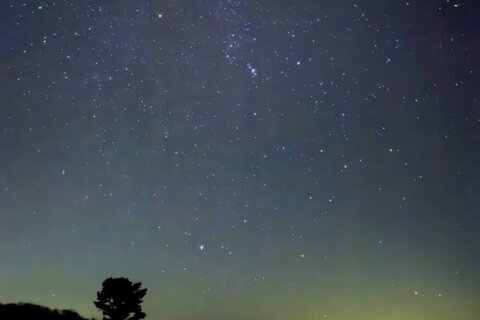WASHINGTON — Wednesday night was the predicted peak of the Orionid Meteor Shower. The best time to look for these bits of Comet Halley debris hitting our atmosphere is after midnight, especially in the hours before dawn.
The Orionids are expected to produce about 20 meteors an hour.
Viewing tips are here, and NASA will be live to follow the Orionids starting at 10 p.m. EDT.
You do not need any equipment or know how to enjoy the show — just find a place where you can put a lounge chair or blanket to see the sky. Starting at about 1 a.m. EDT in the east the constellation for which this meteor shower is named — Orion — hangs low above the horizon and will rise higher as the night progresses. A meteor that is part of the shower can be traced back to Orion. Sporadic meteors that are not part of the shower can be seen during the night as well.
The shower should improve toward dawn and Orionids can appear anywhere in the sky but looking straight up gives you the widest viewing area — this is where the lounge chair or blanket come in handy.
If you are a city dweller, you still may see the brightest Orionids as long as you are not staring into a streetlight or nestled in among tall buildings. The view of the Orionids is worth it from the suburbs as long as lights and obstructions are minimized as best you can.
As I write this I am listening to meteor radar — yes radar that scans for incoming meteors as well as satellites and space debris. It is a fascinating way to monitor a meteor shower like the Orionids. Essentially the louder a ping is, the brighter the meteor would be in the sky.
You can listen during the day and night, so tune your browser to Spaceweather Radio to listen in just like you would go out to watch.
Enjoy the shower with family, friends or your significant other. Some food and beverages are an added plus. Be sure to have extra clothing as it can get cool at night.
Here’s to clear skies!







